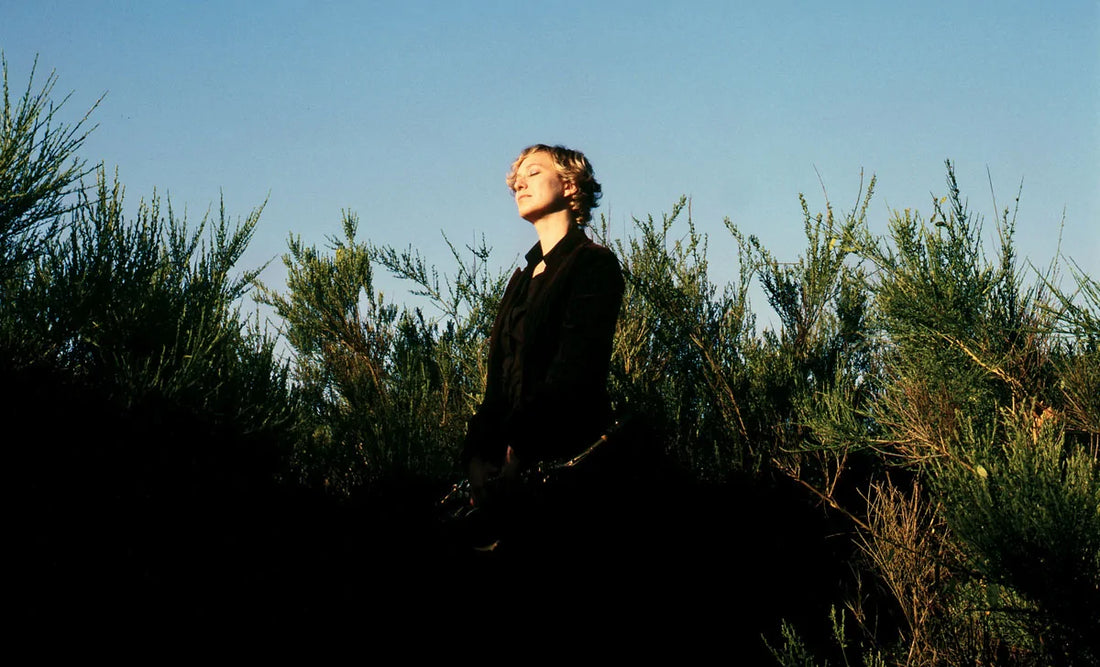Blowing differently: air and posture management

Re-learn how to blow
 Saxophonist, singer, composer and arranger, Lisa Cat-Berro has carved out her own personal niche in the jazz world. After studying at the CNSM in Paris, she recorded a first album in 2013, Inside Air, nominated at the Victoires du Jazz, followed by the superb Good Days Bad Days (2021).
Saxophonist, singer, composer and arranger, Lisa Cat-Berro has carved out her own personal niche in the jazz world. After studying at the CNSM in Paris, she recorded a first album in 2013, Inside Air, nominated at the Victoires du Jazz, followed by the superb Good Days Bad Days (2021).
This second album, eight years later, appears as the testimony of a long road and a reincarnation. Indeed, the musician was bedridden for several months due to serious back problems.
« After 20 years of playing the saxophone professionally, I realized that I had hardly ever learned to blow. Serious back problems led me to reflect on the issue and to experiment with various body approaches that helped me (kinesitherapy, Qi Gong, yoga, Alexander Technique for example). I finally heard myself say that I was blowing "backwards" since all this time. I had to relearn this gesture that I thought was simple, natural and self-evident. In the teaching I had received, the indications on this plane were often limited to "breathe with the belly", "blow downwards", which turned out to be quite damaging later on. So I became aware that this lack of information represents a big gap in teaching.»
During her downtime, the musician began practicing meditation, visualization, and therapeutic singing. She became interested in the chakras, the energy centers of the Hindu tradition, and in the energetic dimension of sound work, and derived obvious benefits from them. She then started a re-education work, to relearn how to blow by integrating all these disciplines in her musical practice.

Her workshop Souffler autrement (Breathing differently) is based on her experience and practice. It is intended for wind instrumentalists and singers who wish to deepen their knowledge of breathing and posture, and learn to blow and sing without hurting themselves. For all those who wish to explore the vibratory dimension of sound and make the link between the singing voice and the instrument, through a bodily approach.
Posture and breathing: Lisa Cat-Berro's advice
1. « Before breathing in, you must first breathe out.
We often tend to start with a deep breath when we want to work on the breath. But it is better to first exhale the air in your lungs and then let the air in.
The inhalation must first of all be a relaxation.
| Practical exercise: On the sound "CH", I empty the air contained in the lungs, until the navel gets closer to the spine. Then, when there is almost no air left, just by relaxing the muscles, I let the air in, without forcing. This is the "inspiratory relaxation". |
2. We often hear that we must "breathe through the belly", but this notion is a bit wrong because the lungs are not located in the belly! When the lungs fill up, you can "feel" the breath on different levels: the abdomen expands, the ribs rise, the back can open up as well (even under the armpits), and the collarbones open up a little.
| Practical exercise: Try to feel these 4 successive breaths, at the moment of breathing in (after having breathed out), first by dissociating them stage by stage, then by joining them together in a big "complete" breath. |
3. Anchoring is an important concept for posture when playing, standing or sitting. It is what allows us to feel anchored in the ground, well in our bases, and which can allow us to lower the level of stress for example.
| Practical exercise: Standing with my knees and pelvis unlocked, I imagine roots coming out of my feet. The roots first make a very small circle in the ground about the size of my pelvis, then spread out a little further, until they make a large circle around me. Then these roots grow and fill the room I am in, then the house, then the whole neighborhood! After doing this exercise you should feel much more grounded in your feet, solid and ready to breathe.» |
► Register for the March 11 workshop
► Learn more about Lisa Cat-Berro
Photo credits: Sylvain Gripoix - Frank Loriou - Philippe Marchin